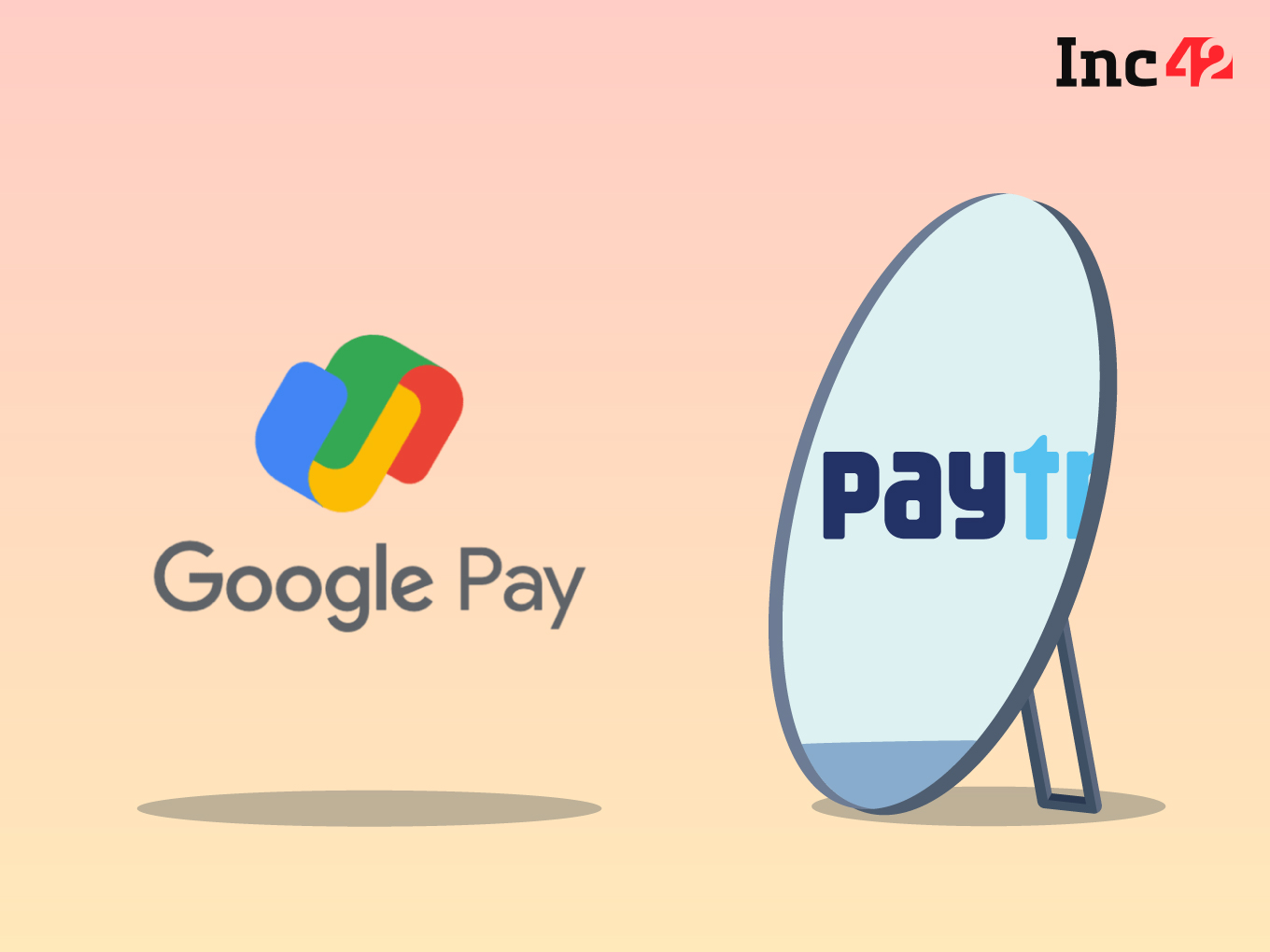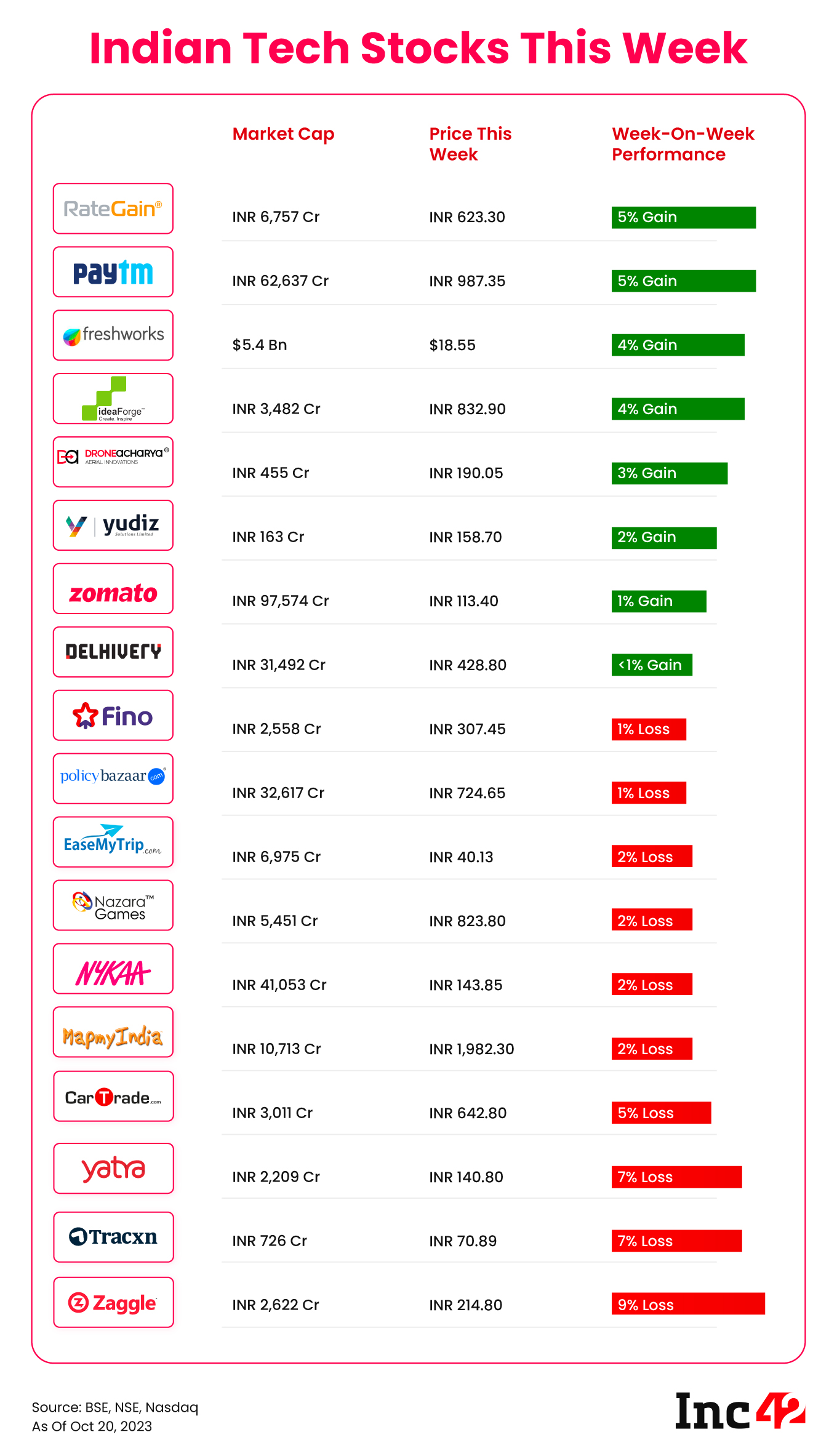Google Pay On Paytm’s Trail

Google Pay is getting serious about fintech. It’s odd to think about it given that GPay was one of the first apps to launch on UPI.
But as is clear by now UPI is not a revenue solution, but more of a top funnel for payment apps these days. So it’s hardly a surprise that Google Pay is taking the leap.
Google’s announcement coincided with Paytm’s Q2 FY24 financials, and in some ways we can see why Google is looking to emulate Paytm in a big way. The Vijay Shekhar Sharma-led company has shown that lending truly works its magic for revenue; will the same hold true for Google Pay?
But before that, Let’s take a look, but after a brief detour into these:
- Net Neutrality Battle 2.0: Indian startups are raising the net neutrality alarm once again after telcos proposed network levies on apps and tech products. Here’s what the ecosystem thinks
- The GenAI Golden Egg: Generative AI or GenAI is not just hype any more. From $1.1 Bn in 2023, the generative AI opportunity is projected to surpass $17 Bn by 2030. Here’s Inc42’s much-awaited GenAI startup landscape report
- New Dawn At BYJU’S? With Arjun Mohan leading the India business, what’s happening at the edtech giant as it looks to turn things around. Here’s how the new CEO is taking charge
Google Pay’s Lending Card
Google processed close to 4 Bn transactions in September through UPI, but this is easily its biggest push into financial services. So far, it has largely been a channel for insurance providers, lenders and other fintech products.
- First, there’s a partnership with Axis Bank for the consumer lending service
- Google Pay also has a tie up with ICICI Bank for credit lines on UPI
- Finally, a partnership with ePayLater to enable a credit line for merchants for working capital needs
While the company had previously offered loans through DMI Finance, this is by far the biggest push into lending for Google. And these ecosystem partners will be key to bringing more such lenders on board in the future.
But why now and what will this mean for the fintech ecosystem?
What Google Stands To Gain?
It’s not just Google, but a host of players that are looking to grab a big share of the lending pie. But in one regard, Google is different from some of the other players. That’s because Google has a whole suite of products and services — even outside Google Pay — to bring users into its ecosystem.
According to founders in the digital lending segment, the advantage for Google is that it has a lot of leverage with lending partners when it comes to origination fees and other revenue sharing. This is because Google has a high reach in terms of consumers and merchants that not even some big banks can boast. Moreover, standalone lending apps that also use the same bank and NBFC partners is well behind Google’s lead in the user base.
The tech giant is also spending millions to acquire merchants with its PoS devices and ‘soundboxes’ through subscription plans. The lending revenue will go a long way towards offsetting some of the CAC in the long run.
One Mumbai-based lending startup founder believes typically companies will have a plan to recover the cost of acquisition in the first year through lending revenue and following this, they will look to keep pushing credit in the form of working capital loans to merchants.
On the consumer side too, lending remains a big lucrative opportunity. The digital consumer lending market is poised to nearly triple in size by 2030. The Indian digital consumer lending market is projected to surpass $720 Bn by 2030, representing nearly 55% of the total $1.3 Tn+ digital lending market opportunity in the country, as per Inc42’s State Of Indian Fintech Ecosystem Q3 2023 report.
Paytm Proves Lending Boom
Of course, everyone knows that lending is a big opportunity, but it’s Paytm that is actually showing what impact it has on the revenue mix. And other apps that are sitting on a large UPI user base are looking to ape this.
The fintech major disbursed 1.32 Cr loans worth INR 16,211 Cr in Q2 FY24, a jump of 44% and 122% YoY respectively. Notably, the financial services revenue was up 64% YoY, compared to the 28% YoY growth in payments revenue. This is the second straight quarter that lending has outperformed payments for Paytm, which boasts nearly 12 Mn unique borrowers.
Like we said at the time of the company’s Q1 financials, Paytm is no longer payments-first, but its focus on financial services is key to maximising revenue from all verticals in its business. This is the attraction for other players as well.
Google Pay’s revenue shrunk 13.8% YoY in FY22, and its FY23 numbers are yet to be released.
Fintech decacorn PhonePe claims to have recorded revenue of INR 2,914 Cr in FY23, but the company is likely to remain in losses for the year. Its statement this week did not mention the bottom line numbers for FY23.
Despite leading the UPI race for the past several years, neither company has managed to come close to breaking even. As we wrote last week, UPI has become an acquisition channel for payments apps that are then looking to bring users to lending and other services.
PhonePe is eyeing the merchant lending space, and this is backed by its subscription-led payments devices (read: soundboxes) play, similar to Google Pay and Paytm. Merchants are key to Paytm growing its B2B loan book, with 3.75 Cr merchants currently signed up to Paytm.
Consumer Tech Giants Join The Fray
It’s not just Google Pay of course. Every major tech company in India has looked to become a digital lending company in some form or the other.
In August, two major consumer internet giants — Flipkart and Swiggy — announced their foray into ‘lending’. While Swiggy has announced an entry into the co-branded credit card segment, Flipkart’s eyes are on the personal loan business. And it’s also stepping on sister concern PhonePe’s shoes with this major lending push.
Another big player CRED jumped into lending with a BNPL product in 2022, and now the fintech unicorn is looking at expanding and casting a wider net for its lending products. The Kunal Shah-led startup will offer credit to those users who do not have a credit card or may not even have a credit history, which is somewhat contrarian to CRED’s original proposition for premium users.
Besides Paytm, PhonePe is likely to be the biggest challenger for Google Pay when it comes to converting users from UPI payments towards lending, since it had nearly 5 Bn transactions in September 2023 compared to Google’s 3.8 Bn.
But as many have pointed out earlier, Google’s reach is pretty much unrivalled in the internet ecosystem and even PhonePe’s lead might not be enough to cover that.
Fintech ecosystem stakeholders believe that credit on UPI will be another major disruptor to the lending ecosystem, levelling the playing field and creating a massive market for frictionless digital loans.
The entry of Reliance and Jio Financial Services is another potential headwind for the startups in the lending space. This past week, JFS said it has already launched a personal loan service in Mumbai, besides consumer durable loans across 300 stores pan India.
Google of course has some skin in the game even in Reliance’s success given its $4.5 Bn investment in Reliance Jio Platforms in 2021. But for now, the company will be banking on its massive lead in the UPI race to take a big lead over the other players.
Google Pay’s entry threatens to upturn the digital lending landscape, even before Jio comes in to give another headache for startups such as PhonePe and CRED, and the likes of Paytm.
Finally, one interesting take-away from our conversations with players in the lending space this week: “If everyone is doing lending and actually showing growth, what does that mean for the Indian economy in the long run?”
That’s a wait and see for now, but we will undoubtedly take a stab at answering this question in the next few weeks.
Startup Spotlight: Focus On Wealth Management
What’s the biggest gap in the financial advisory and asset management space in India? For Neo, a Mumbai-based startup that was founded in November 2021, the answer is two-fold — unbiased advice from trusted experts and transparency. “You see bias in a lot of players because of the conflict of interest in terms of the way the organisations are structured,” Neo founder Nitin Jain told us.
This week, Neo raised $35 Mn to expand its wealth and asset management business with this ethos. The company is focussing on four key verticals — wealth advisory, asset management, multi-family offices and a tech-enabled wealth management platform. But it also has plans to enter personal finance and other areas which will have a bigger focus on technology
Sunday Roundup: Tech Stocks, Startup Funding & More
- Funding Remains Steady: For a second straight week, Indian startup funding remained stable relative to the rest of the year with a total of $237 Mn being raised this past week
- Apple Loves Festive Season: With 1.5 Mn iPhones sold in the first week of the ongoing festive season sales, Apple is having a great start to its traditional late-year boom
- SoftBank Cashing In: As the Zomato stock continues to rally, many key investors are looking to book profits and SoftBank is close to selling 1.1% stake to join the herd

- Tata Neu Lagging: Tata Group is mulling an investment of $1 Bn to bolster the Tata Neu super app and digital commerce business in light of growing competition
- Cleartrip’s Woeful FY23: Flipkart-owned Cleartrip witnessed a nearly 2X jump in its net loss to INR 676.5 Cr and operating revenue fell by 10% to compound problems
That’s all for this week. We’ll be back next Sunday with another roundup of the biggest stories and trends from the startup ecosystem!
The post Google Pay On Paytm’s Trail appeared first on Inc42 Media.
No comments